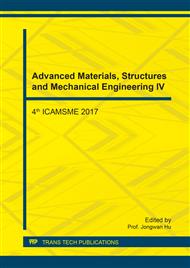p.140
p.147
p.153
p.158
p.164
p.170
p.176
p.193
p.198
Estimation Model of Steel Waste Material: Verification on the Effectiveness of Multiple Regression Analysis
Abstract:
Construction industry is one of the most important sectors for the Malaysian economic growth where it remains as the fastest growing activity for several years. The issue of rapid country development which has positive influence of generating high construction waste is very commonly related to this industry. One of the major contributors of construction waste is steel. Steel is expensive and can contribute to overall project cost implication. Hence, the amount of steel waste needsto be quantifiedat the initial stage. Thus,steel waste quantification model is an important element to be considered for better waste management. By using the data collected in the Central region in Malaysia, an empirical model, Estimation Model of Steel Waste Material has been developed to estimate the amount of steel waste generation based on certain variables. This study aims to investigate and verify the effectiveness of the model by using the data collected from the Northern region in Malaysia. The value of the Mean Absolute Percentage Error (MAPE), 23.02% indicates that the model performance is common and acceptable. Thus, the model has good potential to be adopted by the industry practitioners to plan a better and more effective waste management.
Info:
Periodical:
Pages:
164-169
Citation:
Online since:
November 2017
Keywords:
Price:
Сopyright:
© 2017 Trans Tech Publications Ltd. All Rights Reserved
Share:
Citation:


